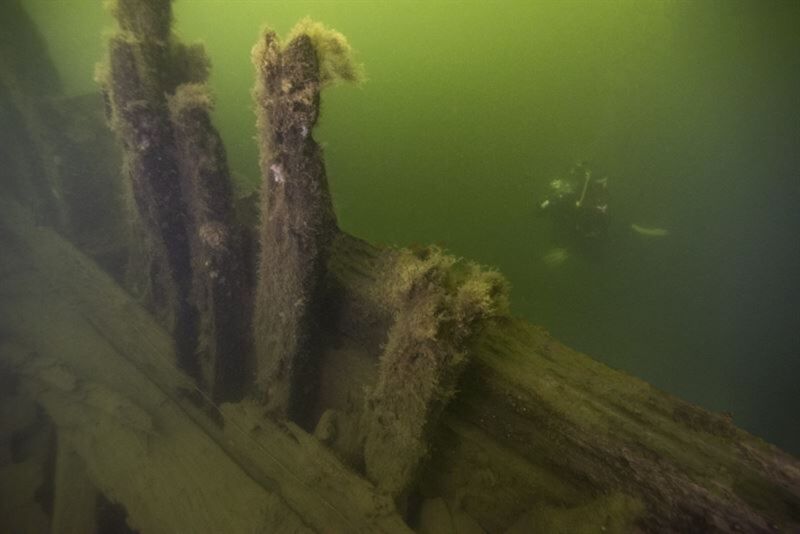
Enlarge / Two shipwrecks discovered in 2019 have been identified as 17th century Swedish war ships Apollo and Maria. (credit: Vrak Museum of Wrecks)
Back in 2019, Swedish maritime archaeologists discovered the wrecks of two 17th century ships at the bottom of a busy Swedish shipping canal near Vaxholm. Initially they suspected these might be the sister ships of the doomed war ship Vasa, which sank in 1628 on her first trip out of port. Thanks to analysis of wood samples obtained from the wrecks, we now know they are actually two rather younger war ships, the Apollo and Maria.
Wooden sailing ships were the high-tech military vehicles of their day, and Vasa and her sisters—Äpplet, Kronan, and Scepter, all built on the order of King Gustav II Adolf (1594-1632)—were among the earliest to carry large numbers of heavy cannon. The Vasa set sail for the first time on August 10, 1628, but as she sailed down the harbor, a strong gust of wind filled the sails and caused the ship to tip so far over to her port side that water poured into the open gunports on the lower deck.
The Vasa sank within minutes, and 30 crew members and guests perished with her, trapped inside the sinking ship. The catastrophe was largely due to a flaw in the Vasa‘s design: the hull’s upper works were too tall and heavy, so its center of gravity was so far above the water, the ship would heel in response to even a relatively slight gust of wind. She might have yet survived, had the gunports not been open. The wreckage of the Vasa was salvaged in 1961, and is now housed in the Vasa Museum in Stockholm.





